













The magazine of the art-form of the photo-essay
“A free, really high quality photo-essay magazine. Fabulous!”
Stephen Fry. British actor, writer and film & documentary maker

June 2014 back issue


by Jordi Perdigo & Cristina Aldehuela

No time limits, no rules, an indiscriminate number of players; let’s play Lelo! The game is a no-holds-barred
combination of wrestling and rugby that is very popular in south-western Georgia. Every Easter Sunday, the residents
of Shukhuti remember their dead by playing this ancient game. Lelo is a sport and a tradition, but most of all it’s about
passion, strength, faith and devotion.
Two creeks, about 150 meters apart, mark the goal lines for two teams. Between them a playing field full of houses,
gardens and a road. The teams are made up of citizens from the upper and lower halves of this small town but
whoever wants is free to join them. The aim is easy; whichever side is the first to carry a 16 kilogram ball back to their
creek wins. Meanwhile fences, trees, and bones are crushed by a big melee.
Victory not only means beat your opponent. Victory is a tribute to those who are no longer with them. The ball is given
as an offering to a deceased villager and placed on his grave after the match. Kvemo (the lower part) took the victory
this year, at least until the next Easter battle starts.
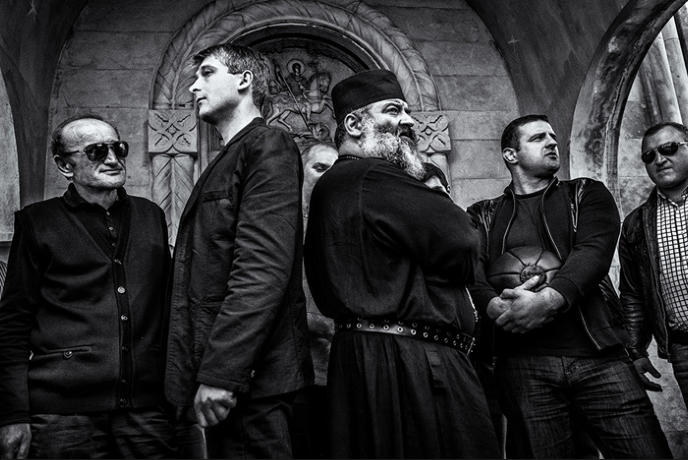
The town's orthodox priest Saba and the bodyguards of the internal affairs minister of Georgia are holding the ball
before the game starts.
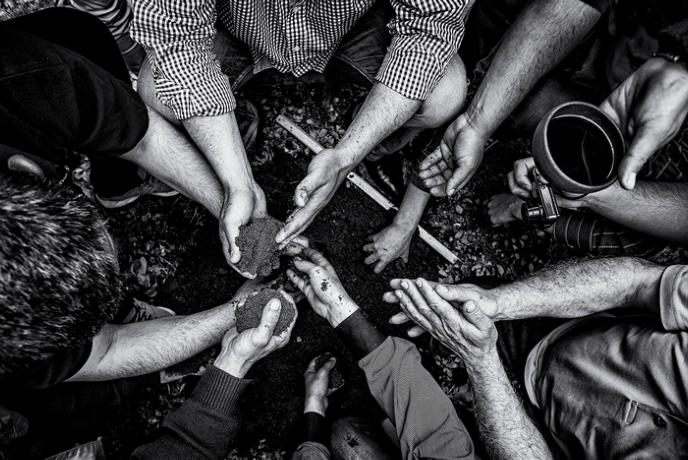
The 16 kilo ball is made of sand, water and wine.
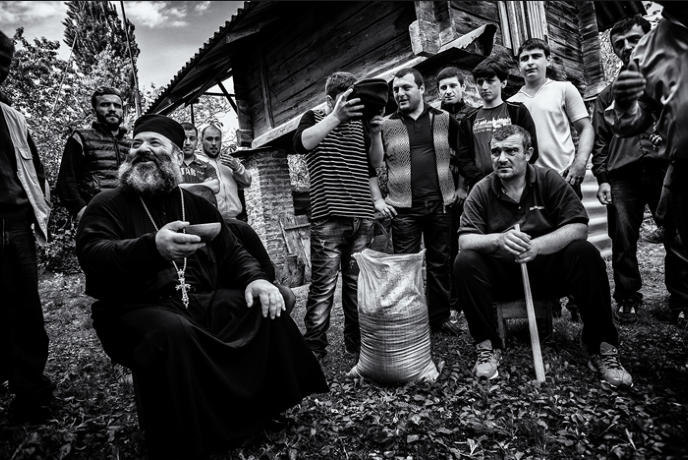
The ball is made on the day of the game. The priest and some neighbours gather together in the old house of the
town's shoemaker. Wine and food is being served.
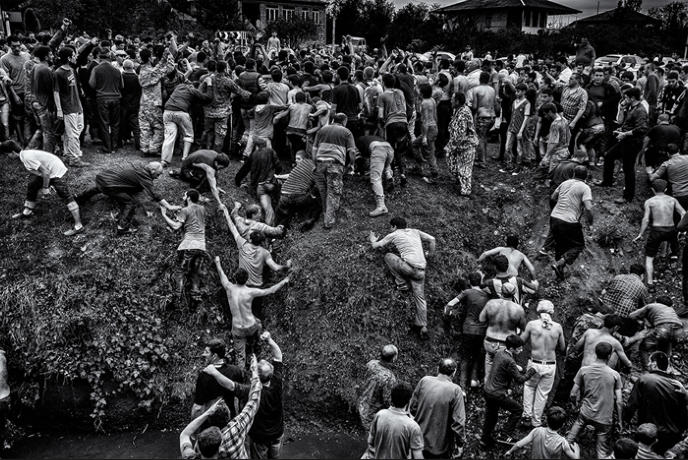
Apart from town's neighbours, a massive number of players come from all over the country to play. All of them create a
huge crowd that can consist of hundreds of people.
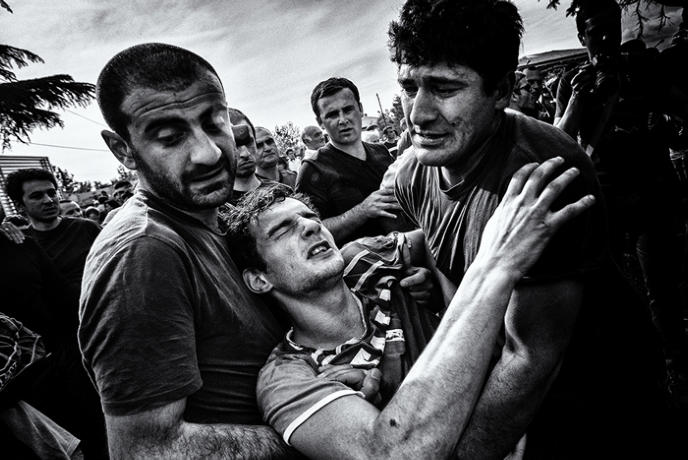
Only 3 minutes after the start, the first injured people are carried away. Usually they recover after few minutes and go
back into play.
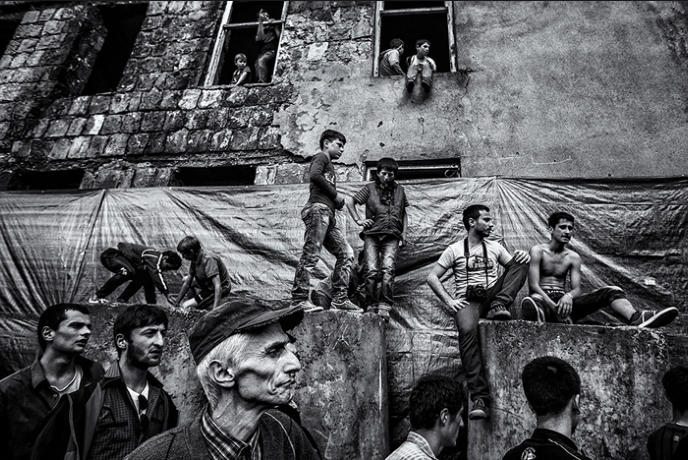
This ancient tradition is about playing but it attracts thousands of people that come just to watch the brave men.
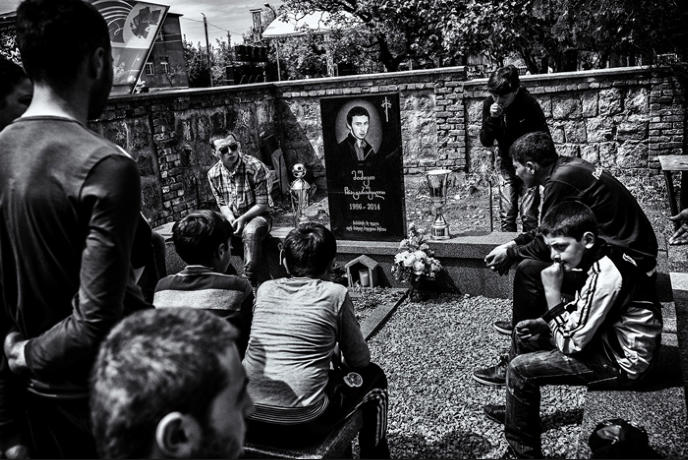
Shukhuti upper part (Kvemo) have chosen to who will they offer the ball this year - an 18 years old friend who died few
months back.
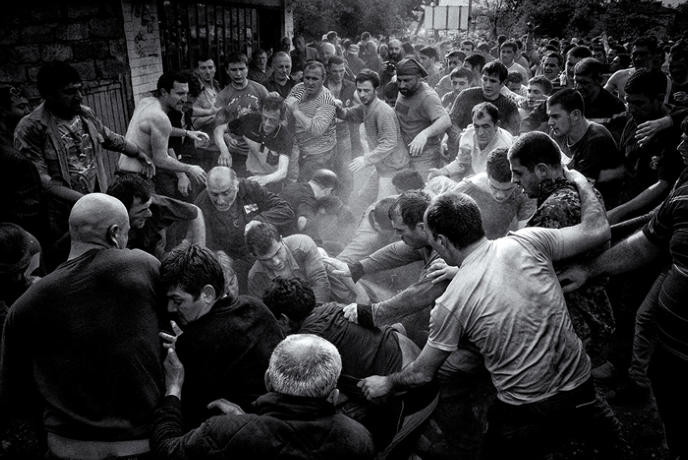
Usually the ball is not seen during the game as a scrum is always on top of it. Despite its 16 kilo weight men carry it as
if it were a regular rugby ball.
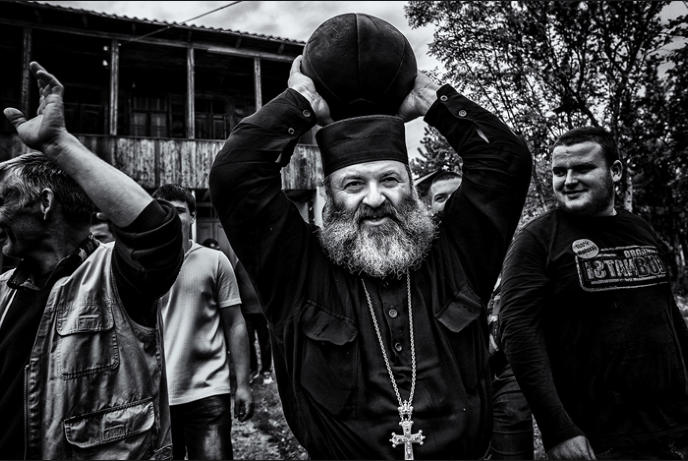
After making the ball, Saba the priest leaves it inside the church until kick off and the ball has been purified.
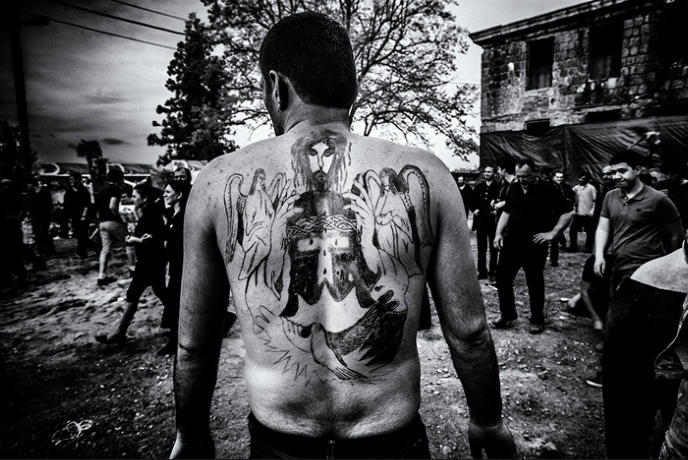
Georgia was one of the first cultures to embrace Christianity.
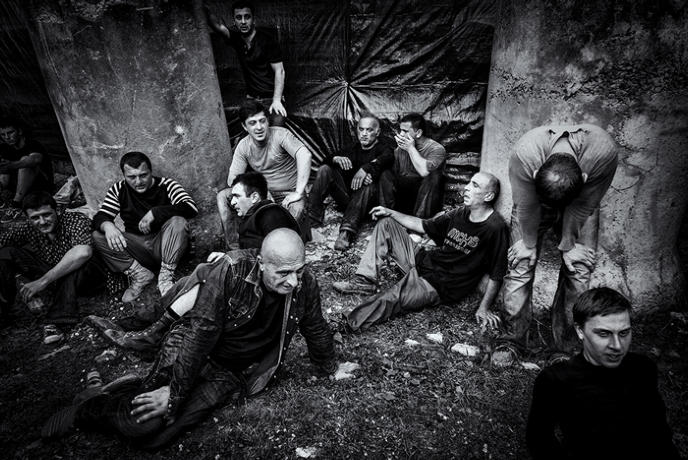
Without halves parts or pauses, the no time rule game doesn't stop until one of the parts of the town wins.
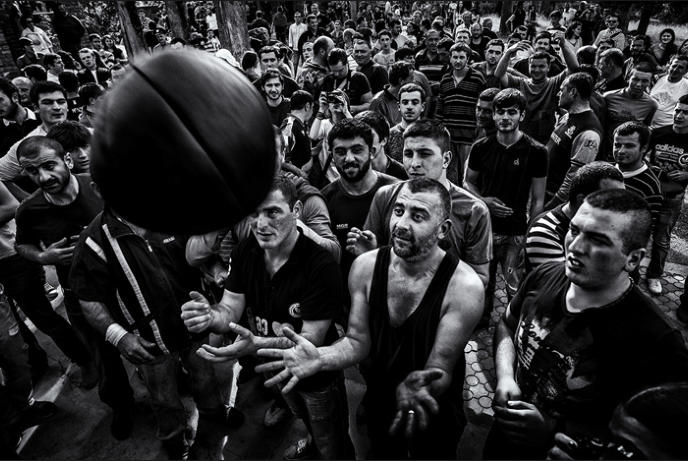
As a warm up before the game starts, players train with the ball passing it to each other.
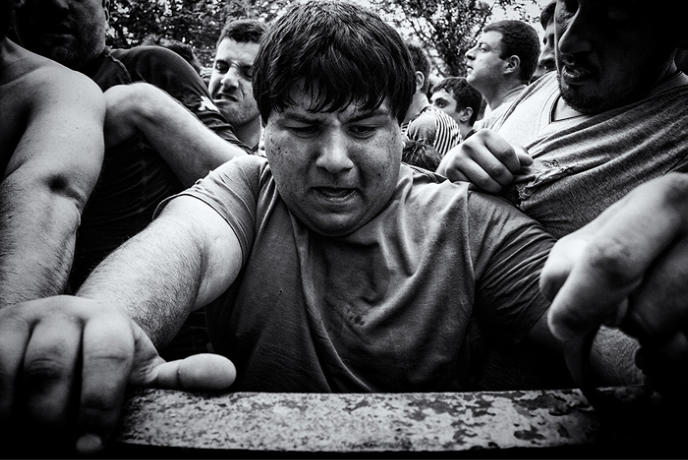
The erratic turns that the melee takes are difficult to predict, moving faster is the key to not getting smashed.
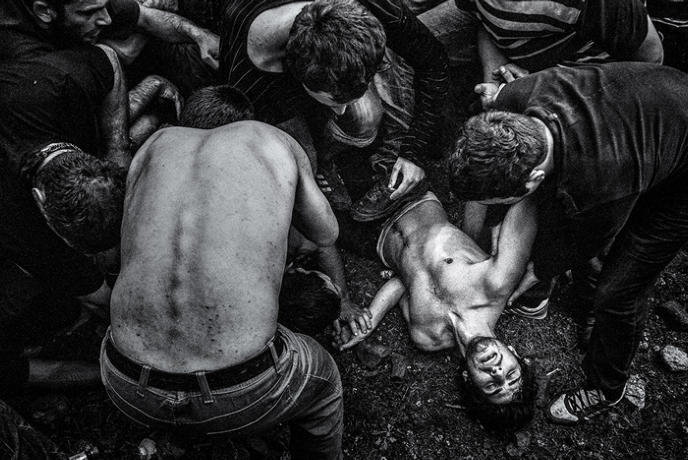
Despite the violence that takes place during the game, the injuries don't go further than bruises or broken arms or legs.
No-one has ever been seriously hurt.



This year Kvemo took the credit and won. The heavy ball ended in their creek so theirs is the honour to put the ball
beside their tomb of choice.
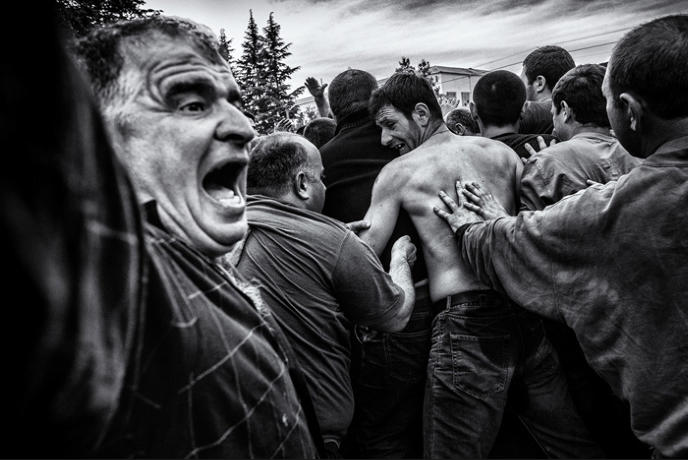
To win, the teams try to push the scrum as hard and with as many men as they can.
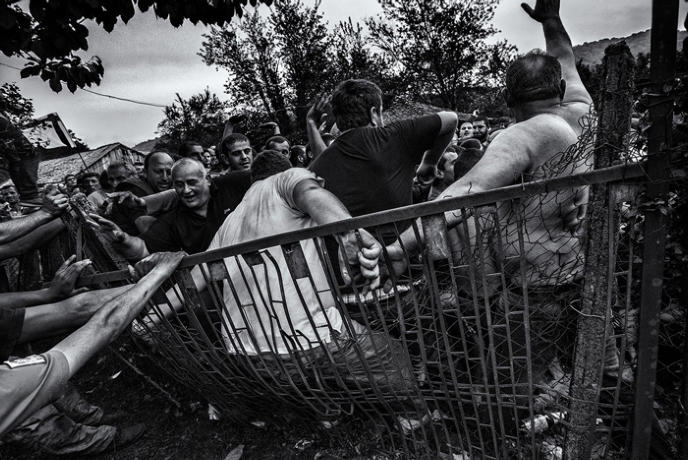
The game field is the whole town, anything in its way is likely to be destroyed by the melee. Fences, trees, gardens
and even houses have been smashed over the years.
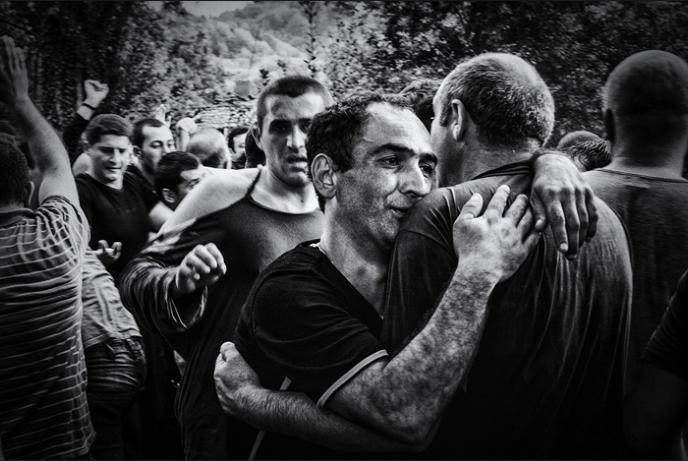
Lelo is just a game, even after the tough and at times violent battle, players never lose their friendships.
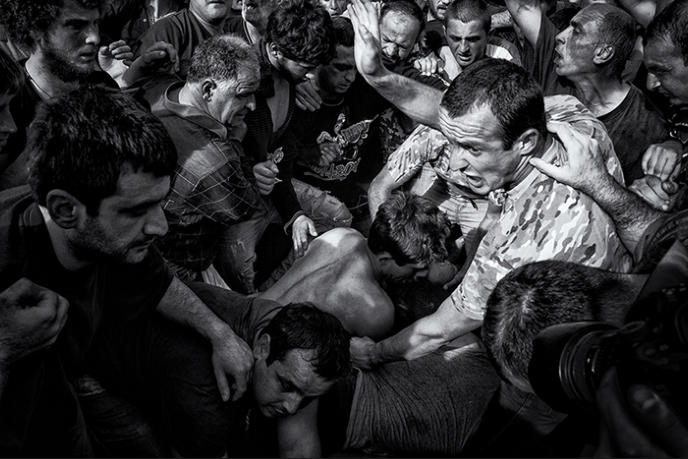
Raising the hand means someone is injured and the game has to stop. The only rule that is sometimes followed.










